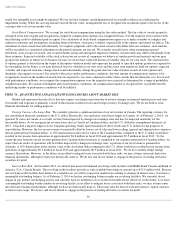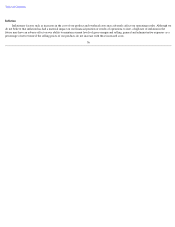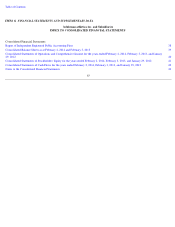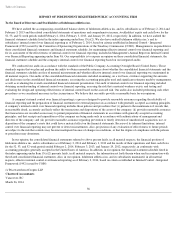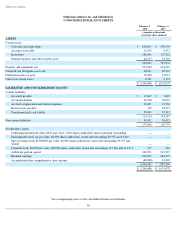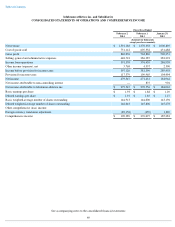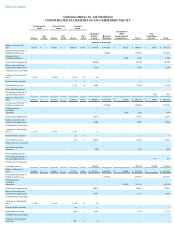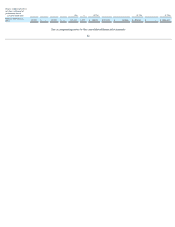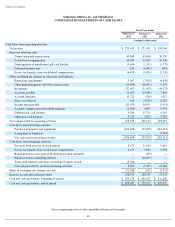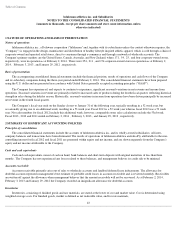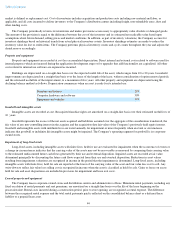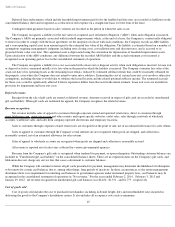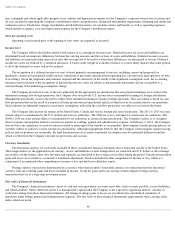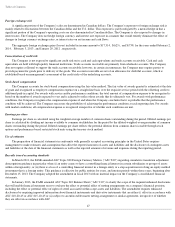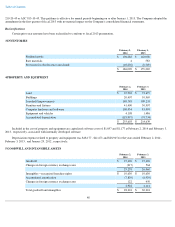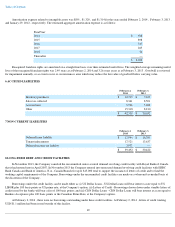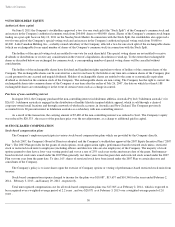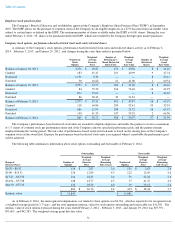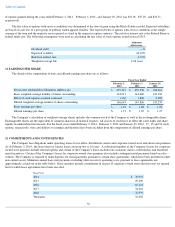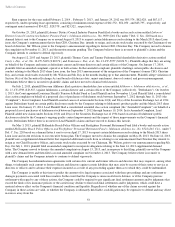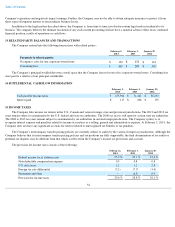Lululemon 2013 Annual Report Download - page 52
Download and view the complete annual report
Please find page 52 of the 2013 Lululemon annual report below. You can navigate through the pages in the report by either clicking on the pages listed below, or by using the keyword search tool below to find specific information within the annual report.
Table of Contents
market is defined as replacement cost. Cost of inventories includes acquisition and production costs including raw material and labor, as
applicable, and all costs incurred to deliver inventory to the Company's distribution centers including freight, non-refundable taxes, duty and
other landing costs.
The Company periodically reviews its inventories and makes provisions as necessary to appropriately value obsolete or damaged goods.
The amount of the provision is equal to the difference between the cost of the inventory and its estimated net realizable value based upon
assumptions about future demand, selling prices and market conditions. In addition, as part of inventory valuations, the Company accrues for
inventory shrinkage based on historical trends from actual physical inventory counts. Inventory shrinkage estimates are made to reduce the
inventory value for lost or stolen items. The Company performs physical inventory counts and cycle counts throughout the year and adjusts the
shrink reserve accordingly.
Property and equipment
Property and equipment are recorded at cost less accumulated depreciation. Direct internal and external costs related to software used for
internal purposes which are incurred during the application development stage or for upgrades that add functionality are capitalized. All other
costs related to internal use software are expensed as incurred.
Buildings are depreciated on a straight-line basis over the expected useful life of the asset, which ranges from 10 to 20 years. Leasehold
improvements are depreciated on a straight-line basis over the lesser of the length of the lease, without consideration of option renewal periods,
and the estimated useful life of the improvement, to a maximum of five years. All other property and equipment are depreciated using the
declining balance method as follows. Depreciation commences when an asset is ready for its intended use.
Goodwill and intangible assets
Intangible assets are recorded at cost. Reacquired franchise rights are amortized on a straight-line basis over their estimated useful lives of
10 years.
Goodwill represents the excess of the net assets acquired and liabilities assumed over the aggregate of the consideration transferred, the
fair value of any non-controlling interest in the acquiree and the acquisition-date fair value of the Company's previously held equity interest.
Goodwill and intangible assets with indefinite lives are tested annually for impairment or more frequently when an event or circumstance
indicates that goodwill or indefinite life intangible assets might be impaired. The Company's operating segment for goodwill is its corporate-
owned stores.
Impairment of long
-lived assets
Long-lived assets, including intangible assets with finite lives, held for use are evaluated for impairment when the occurrence of events or
a change in circumstances indicates that the carrying value of the assets may not be recoverable as measured by comparing their carrying value
to the estimated undiscounted future cash flows generated by their use and eventual disposition. Impaired assets are recorded at fair value,
determined principally by discounting the future cash flows expected from their use and eventual disposition. Reductions in asset values
resulting from impairment valuations are recognized in income in the period that the impairment is determined. Long-lived assets, including
intangible assets with finite lives, held for sale are reported at the lower of the carrying value of the asset and fair value less cost to sell. Any
write-down to reflect fair value less selling cost is recognized in income when the asset is classified as held for sale. Gains or losses on assets
held for sale and asset dispositions are included in provision for impairment and lease exit costs.
Leased property and equipment
The Company leases corporate-owned stores and distribution centers and administrative offices. Minimum rental payments, including any
fixed escalation of rental payments and rent premiums, are amortized on a straight-line basis over the life of the lease beginning on the
possession date. Rental costs incurred during a construction period, prior to store opening, are recognized as rental expense. The difference
between the recognized rental expense and the total rental payments paid is reflected on the consolidated balance sheet as a deferred lease
liability or a prepaid lease asset.
44
Furniture and fixtures
20
%
Computer hardware and software
30
%
Equipment and vehicles
30
%


